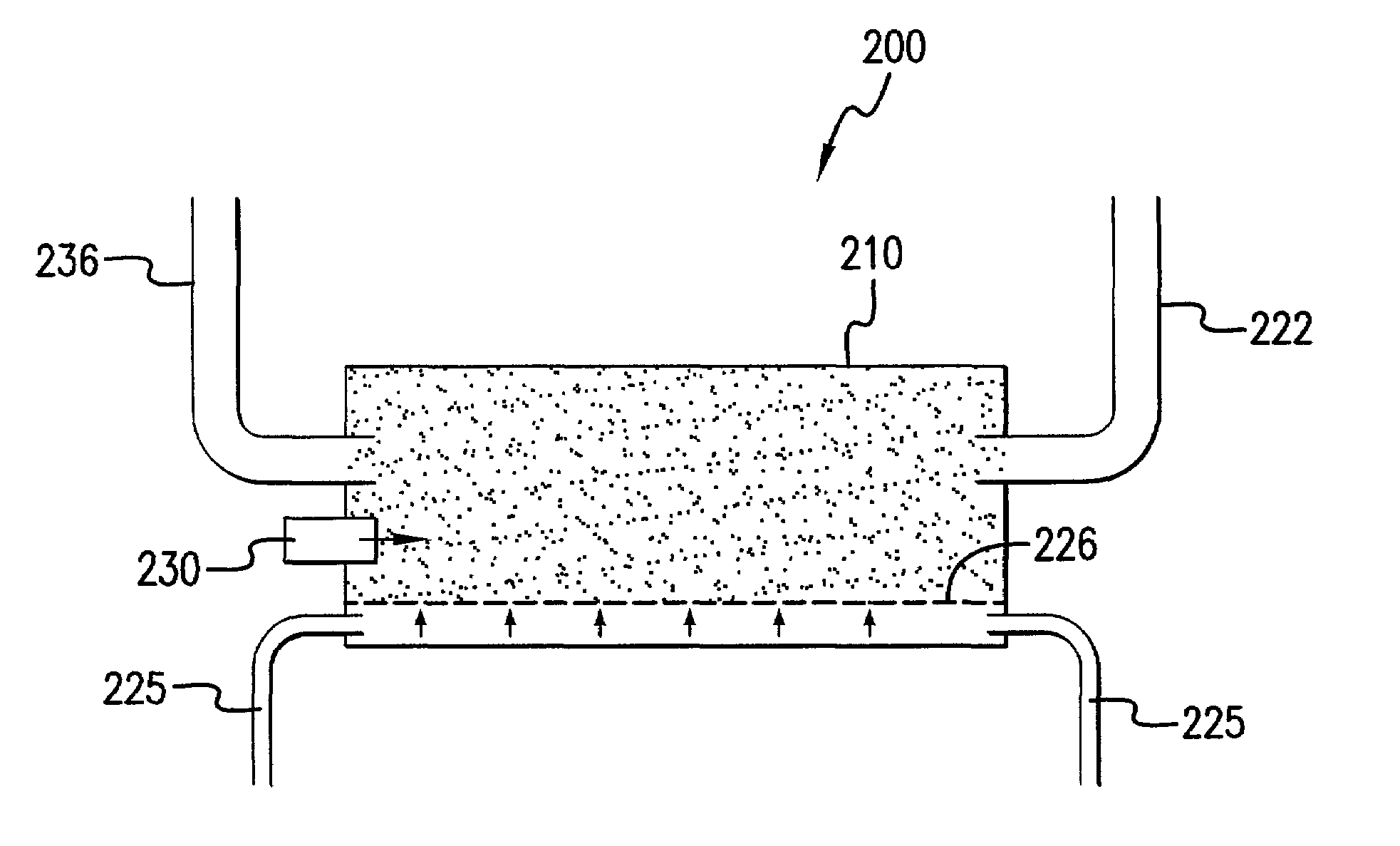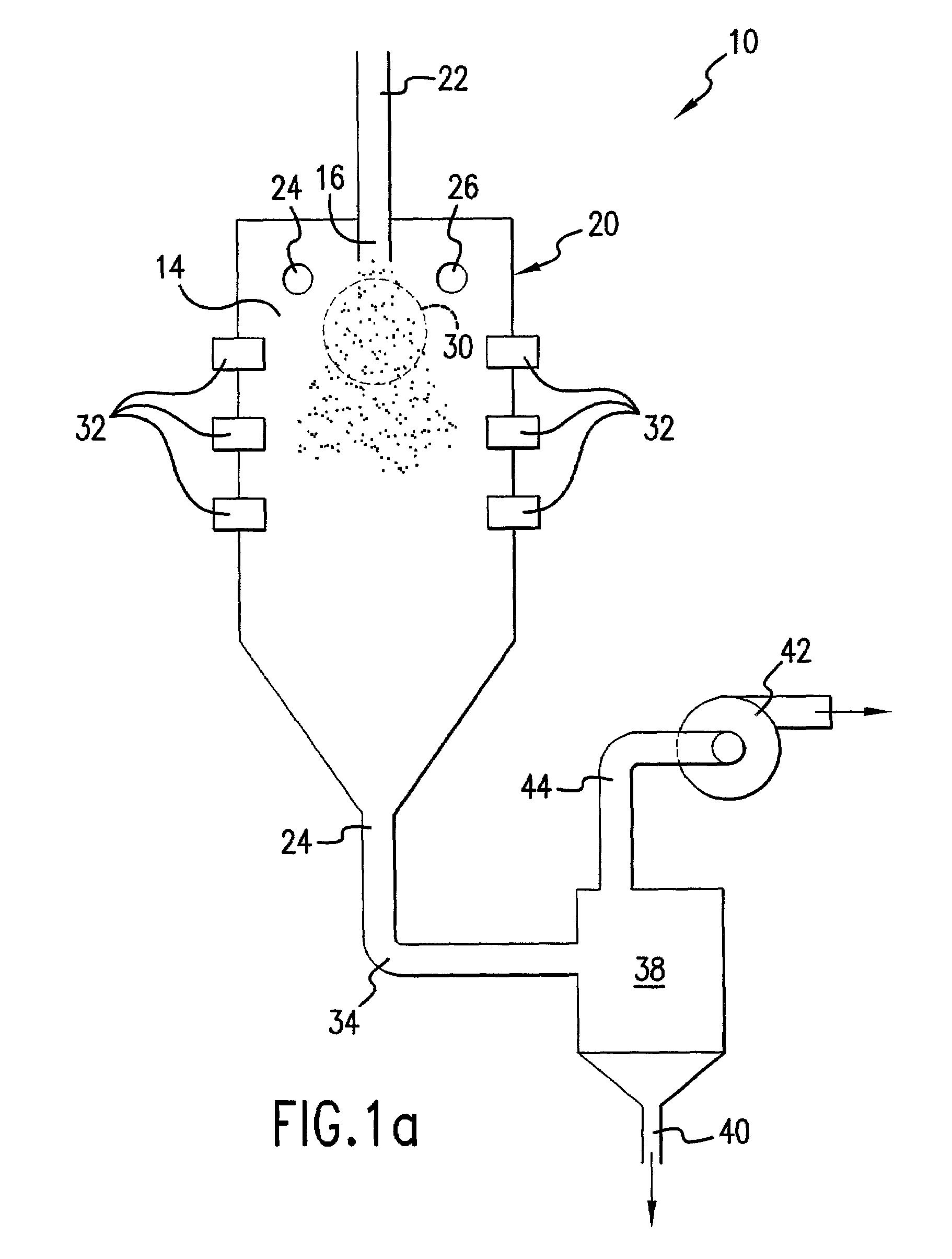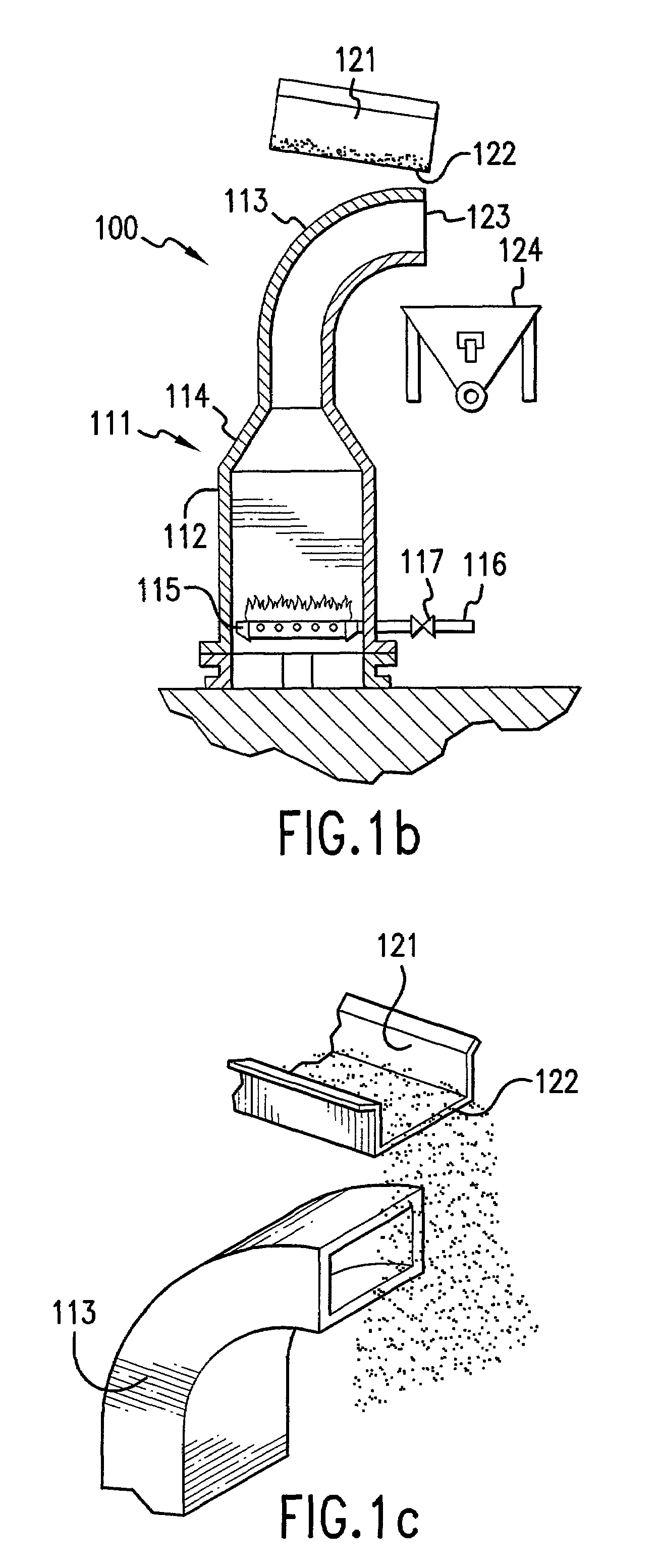Versatile processes for preparing and using novel composite particles in powder coating compositions
a composite particle and composite technology, applied in the field of powder coating compositions, can solve the problems of incompatibility of other materials in the composition, affecting the stability of the composition,
- Summary
- Abstract
- Description
- Claims
- Application Information
AI Technical Summary
Benefits of technology
Problems solved by technology
Method used
Image
Examples
example 1
Effects of Flash Heating on Particle Size and Thermal Chemical Stability of Powder Coatings
[0119]Purpose: Traditional powder coatings are generally manufactured at process temperatures between 200° F. and 280° F. and cured at temperatures of 300° F. to 450° F. for 10 to 20 minutes. Powder coating materials are engineered to react rapidly at these cure temperatures to form tough and / or hard coatings. In this study, three different thermally cured powder coating chemistries have been subjected to the high temperatures of the flash fusion process to determine temperature effects on chemical stability, particle morphology and particle size distribution.
[0120]Host Preparation: Three powder coatings produced using the standard extrusion and grinding processes were exposed to flash heating to study the effects on particle size distribution (PSD), particle morphology and chemical stability. The formulations are described below:
[0121]7634-19A (references Example #5 and #6) with 1.0 part cata...
example 2
Method of Adding Crystalline Resins to a Powder Formulation
[0133]Purpose: It has been long known that crystalline additives and resins can significantly reduce the melt viscosity of powder coatings and thereby increase surface smoothness. However, the traditional powder manufacturing process is not well suited for mixing these types of raw materials, especially at high levels. This study demonstrates that the flash fusion process can be used to attach crystalline materials onto host particles providing the desired rheological benefits without the unwanted lowering of the powder Tg and subsequent physical stability problems.
[0134]Host Preparation: The host formulas used in this experiment are presented in the following table. Each formulation was moderately mixed in a laboratory-scale high-intensity mixer. The material was then extruded and ground according to the process described in the “General Powder Coating Extrusion and Grinding Process” section.
[0135]Sample J was a control sam...
example 3
Evidence of Controlled Diffusion / Mixing in the Flash Fusion Stage
[0158]Purpose: Incorporation of incompatible additives and resins into powder coatings create significant challenges, especially in controlling the degree of mixing and reproducibility from lot to lot. This study demonstrates that the flash fusion process can be used to control the degree of mixing of a crystalline resin by varying process conditions, which in this study was accomplished by passing the host and guest particles through the heating zone multiple times.
[0159]Sample Preparation: The 7634-15B host and micronized Uracross 3307 guest particles were prepared using the methods and formulations described in Example 2. Host particles had a d10 of 8.2 μm, a d50 of 23.6 μm and a d50 of 46.7 μm.
[0160]Mixing Operation: To the host powder, micronized Uracross 3307 guest particles were added at the 12.5 grams / 100 grams host. The mixture was V-blended for 30 minutes and then passed through a lab sized MAIC mixer (refer ...
PUM
| Property | Measurement | Unit |
|---|---|---|
| particle size | aaaaa | aaaaa |
| particle size | aaaaa | aaaaa |
| particle size | aaaaa | aaaaa |
Abstract
Description
Claims
Application Information
 Login to View More
Login to View More - R&D
- Intellectual Property
- Life Sciences
- Materials
- Tech Scout
- Unparalleled Data Quality
- Higher Quality Content
- 60% Fewer Hallucinations
Browse by: Latest US Patents, China's latest patents, Technical Efficacy Thesaurus, Application Domain, Technology Topic, Popular Technical Reports.
© 2025 PatSnap. All rights reserved.Legal|Privacy policy|Modern Slavery Act Transparency Statement|Sitemap|About US| Contact US: help@patsnap.com



